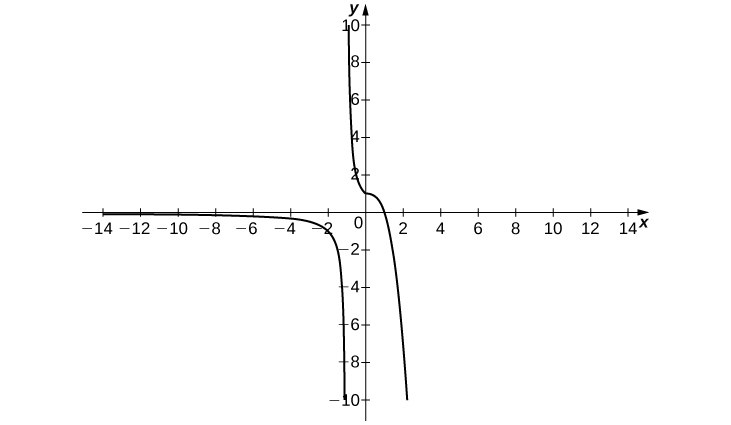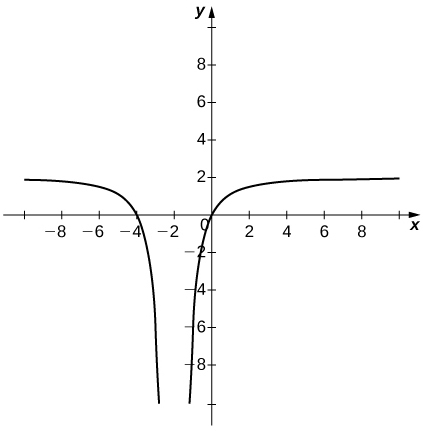A Preview of Calculus
For the following exercises (1-3), points [latex]P(1,2)[/latex] and [latex]Q(x,y)[/latex] are on the graph of the function [latex]f(x)=x^2+1[/latex].
-
- [latex]2.2100000[/latex]
- [latex]2.0201000[/latex]
- [latex]2.0020010[/latex]
- [latex]2.0002000[/latex]
- [latex](1.1000000, 2.2100000)[/latex]
- [latex](1.0100000, 2.0201000)[/latex]
- [latex](1.0010000, 2.0020010)[/latex]
- [latex](1.0001000, 2.0002000)[/latex]
- [latex]2.1000000[/latex]
- [latex]2.0100000[/latex]
- [latex]2.0010000[/latex]
- [latex]2.0001000[/latex]
- [latex]y=2x[/latex]
- [latex]3[/latex]
-
- [latex]2.0248457[/latex]
- [latex]2.0024984[/latex]
- [latex]2.0002500[/latex]
- [latex]2.0000250[/latex]
- [latex](4.1000000,2.0248457)[/latex]
- [latex](4.0100000,2.0024984)[/latex]
- [latex](4.0010000,2.0002500)[/latex]
- [latex](4.00010000,2.0000250)[/latex]
- [latex]0.24845673[/latex]
- [latex]0.24984395[/latex]
- [latex]0.24998438[/latex]
- [latex]0.24999844[/latex]
- [latex]y=\frac{x}{4}+1[/latex]
- [latex]\pi[/latex]
-
- [latex]−0.95238095[/latex]
- [latex]−0.99009901[/latex]
- [latex]−0.99502488[/latex]
- [latex]−0.99900100[/latex]
- [latex](−1;.0500000,−0;.95238095)[/latex]
- [latex](−1;.0100000,−0;.9909901)[/latex]
- [latex](−1;.0050000,−0;.99502488)[/latex]
- [latex](1.0010000,−0;.99900100)[/latex]
- [latex]-0.95238095[/latex]
- [latex]−0.99009901[/latex]
- [latex]−0.99502488[/latex]
- [latex]−0.99900100 [/latex]
- [latex]y=−x-2[/latex]
- [latex]−49[/latex] m/sec (velocity of the ball is [latex]49[/latex] m/sec downward)
- [latex]5.2[/latex] m/sec
- [latex]-9.8[/latex] m/sec
- [latex]6[/latex] m/sec
- Under, [latex]1[/latex] unit2; over: [latex]4[/latex] unit2. The exact area of the two triangles is [latex]\frac{1}{2}(1)(1)+\frac{1}{2}(2)(2)=2.5 \text{ units}^2[/latex].
- Under, [latex]0.96[/latex] unit2; over, [latex]1.92[/latex] unit2. The exact area of the semicircle with radius [latex]1[/latex] is [latex]\frac{\pi (1)^2}{2}=\frac{\pi }{2}[/latex] unit2.
- Approximately [latex]1.3333333[/latex] unit2
Introduction to the limit of a function
In the following exercises (1-3), set up a table of values to find the indicated limit. Round to eight digits.
-
- [latex]−0.80000000[/latex]
- [latex]−0.98000000[/latex]
- [latex]−0.99800000[/latex]
- [latex]−0.99980000[/latex]
- [latex]−1.2000000[/latex]
- [latex]−1.0200000[/latex]
- [latex]−1.0020000[/latex]
- [latex]−1.0002000;[/latex]
[latex]\underset{x\to 1}{\lim}(1-2x)=-1[/latex]
-
- [latex]−37.931934[/latex]
- [latex]−3377.9264[/latex]
- [latex]−333,777.93[/latex]
- [latex]−33,337,778[/latex]
- [latex]−29.032258[/latex]
- [latex]−3289.0365[/latex]
- [latex]−332,889.04[/latex]
- [latex]−33,328,889[/latex]
[latex]\underset{x\to 0}{\lim}\frac{z-1}{z^2(z+3)}=−\infty[/latex]
-
- [latex]0.13495277[/latex]
- [latex]0.12594300[/latex]
- [latex]0.12509381[/latex]
- [latex]0.12500938[/latex]
- [latex]0.11614402[/latex]
- [latex]0.12406794[/latex]
- [latex]0.12490631[/latex]
- [latex]0.12499063[/latex]
[latex]\underset{x\to 2^-}{\lim}\frac{1-\frac{2}{x}}{x^2-4}=0.1250=\frac{1}{8}[/latex]
-
- [latex]−10.00000[/latex]
- [latex]−100.00000[/latex]
- [latex]−1000.0000[/latex]
- [latex]−10,000.000;[/latex]
Guess: [latex]\underset{\alpha \to 0^+}{\lim}\frac{1}{\alpha } \cos (\frac{\pi }{\alpha })=\infty[/latex], Actual: DNE
![A graph of the function (1/alpha) * cos (pi / alpha), which oscillates gently until the interval [-.2, .2], where it oscillates rapidly, going to infinity and negative infinity as it approaches the y axis.](https://s3-us-west-2.amazonaws.com/courses-images/wp-content/uploads/sites/2332/2018/01/11202929/CNX_Calc_Figure_02_02_214.jpg)
- False; [latex]\underset{x\to -2^+}{\lim}f(x)=+\infty[/latex]
- False; [latex]\underset{x\to 6}{\lim}f(x)[/latex] DNE since [latex]\underset{x\to 6^-}{\lim}f(x)=2[/latex] and [latex]\underset{x\to 6^+}{\lim}f(x)=5[/latex].
- [latex]2[/latex]
- [latex]1[/latex]
- DNE
- [latex]0[/latex]
- DNE
- [latex]2[/latex]
- [latex]3[/latex]
- DNE
- [latex]0[/latex]
-
Answers may vary.

-
Answers may vary.
